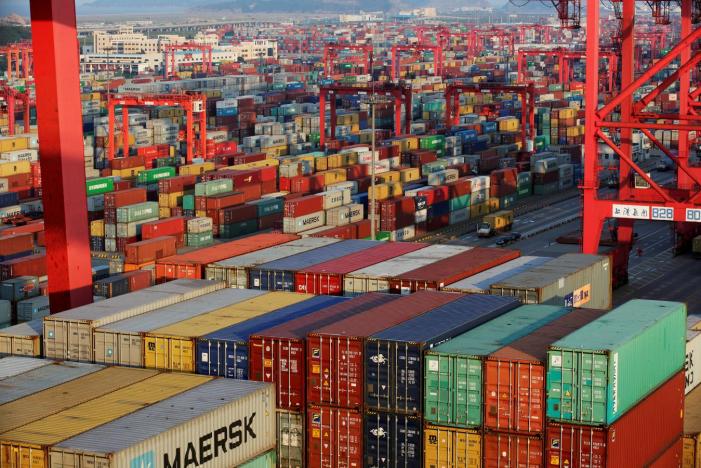
The gap between imports and exports stood at $26.6 billion during the July-April period of this fiscal year, which was 40.1% or $7.6 billion more than the comparative period last year, announced the Pakistan Bureau of Statistics (PBS) on Wednesday. It was again the highest ever trade deficit recorded in the country’s history during a ten-month period.
The monthly import bill in April alone stood at $5 billion, a level it was at during March as well. With the export figure for April showing nominal growth year-on-year, pressure on Pakistan’s foreign exchange reserves is expected to increase.
Meanwhile, experts continued to question the finance ministry’s policy to maintain a strong rupee, which, according to them, has now started to hurt import-substitution industries due to cheaper imports.
Like the previous months, constant double-digit growth in imports remained the main reason behind the growing trade deficit. The ten-month trade deficit is $6.2 billion more than the annual trade deficit target of $20.5 billion set by the finance ministry.
Due to this uncontrolled trade deficit, the balance of payments position is now projected to worsen beyond the levels projected by the finance ministry. Moody’s Investors Service has projected that Pakistan’s current account deficit - gap between external payments and receipts - would now grow to a whopping $8.2 billion by the end of June this year.
Real problems
The projected current account deficit is $3.7 billion higher than finance ministry’s original estimates, which means external borrowings will continue and hit the official foreign currency reserves.
Exports plunged 2.3% to only $16.9 billion during July-April, which were $396 million less than the exports made in the comparative period of last year. In comparison, imports increased 20% to $43.4 billion in the same period. In absolute terms, the import bill was $7.2 billion higher than the previous year.
The real problem is the mushroom growth in imports and these are not only China-Pakistan Economic Corridor-related imports, said Dr Hafiz Pasha, former finance minister and renowned economist. Pasha said that CPEC-related imports were only one-fourth of the increase in imports.
A strong rupee against the dollar has made imports cheaper, said Pasha. He said that importers have started speculating that the finance ministry may eventually have to devalue the rupee against the dollar.
Moody’s analysis
In its latest report on Pakistan, Moody’s said that the widening current account deficit will be driven by continued expansion of the trade deficit, subdued growth in remittance inflows and increased interest payments on external debt related, in particular, to CPEC projects, which are recorded as negative primary income in the current account.
Moody’s said that going forward, CPEC is positive for potential growth, but it also raises potential external stability risks driven by large capital goods imports from China.
Due to mushroom growth in imports, Pakistan imported $43.5 billion worth goods, which were equivalent to 96% of the annual projections. In contrast, exports in the first ten months of the fiscal year were only 68% of the annual target of $24.8 billion.
Independent economists say that a ballooning trade deficit has finally exposed the vulnerabilities of Pakistan’s economy.
On an annual basis, the trade deficit in April was 51.7% more than the comparative period, showed the PBS data. The trade deficit for the consecutive second month remained at $3.2 billion, which in absolute terms was $1.1 billion more than the deficit recorded in April 2016.
The exports in April this year stood at $1.8 billion, at previous month’s level, showing a growth of 5.2% when compared with the results of last year, according to the PBS. In absolute terms, exports were up by just $89 million. However, the growth in imports jumped to 30.8%, as the bill grew to $5 billion in April this year. The import bill was $1.2 billion more than last year.
Published in The Express Tribune, May 11th, 2017.
Like Business on Facebook, follow @TribuneBiz on Twitter to stay informed and join in the conversation.

1732271743-0/diddy-(45)1732271743-0-165x106.webp)















COMMENTS
Comments are moderated and generally will be posted if they are on-topic and not abusive.
For more information, please see our Comments FAQ